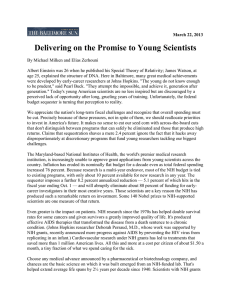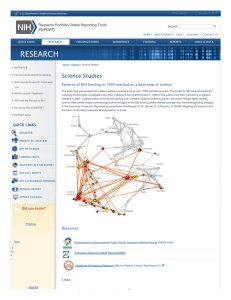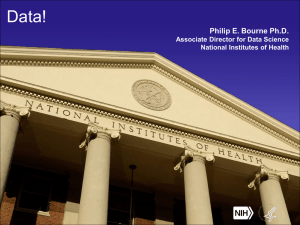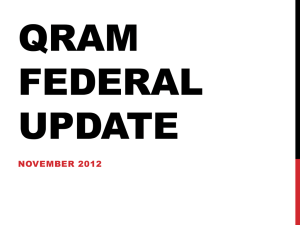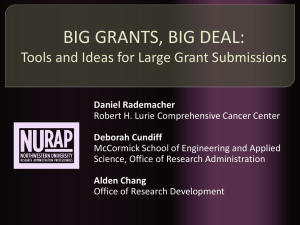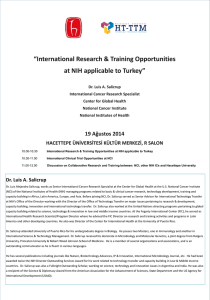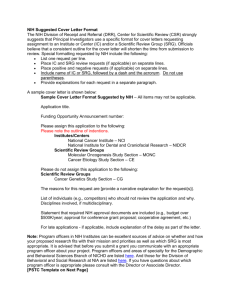Collaboration & Team Science
advertisement
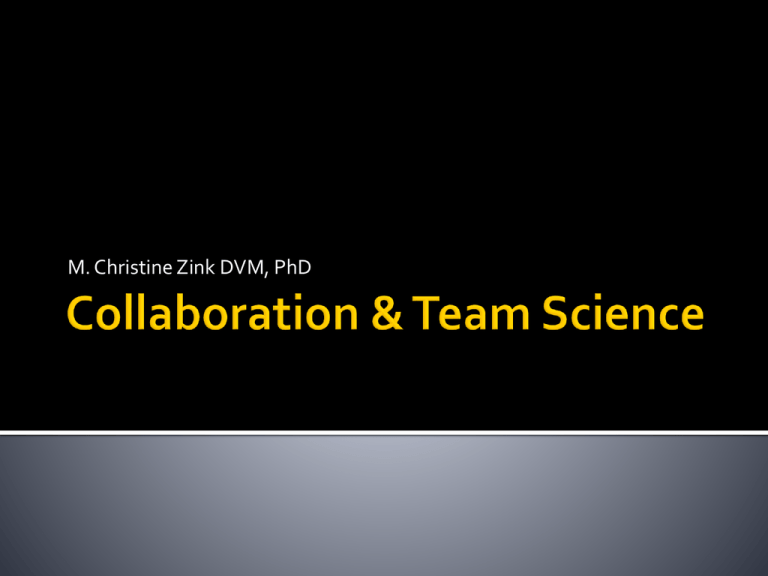
M. Christine Zink DVM, PhD About 12 years ago, at an outstanding medical school south of San Francisco…. Fiefdom: The estate or domain of a feudal lord. Something over which one dominant person or group exercises control. (June 17, 2011) In October 2009, the Stanford University CTSA launched its first-ever team science training program. Ten teams and 70 people participated in the workshop. 2009 Cambridge University (UK)mathematician Tim Gowers set up the Polymath Project An open blog to solve a difficult mathematical problem Within hours mathematicians and teachers from Canada, Hungary, Arizona and UCLA had chimed in In just 6 weeks, the problem was solved New Scientist 2011 Definition: integration of two or more scientific approaches to solve a complex, multifaceted problem Drivers: Advances in technologies Vast data sets Enormously increased range of questions Speed up the rate of discovery Apply novel methods to solve old problems Promote breadth of knowledge Apply specialized knowledge to new problems Relatedness of Science Disciplines Science Commons (http://creativecommons.org/science) 2003 NIH Bioengineering Consortium (BECON) hosts Catalyzing Team Science symposium NIH Roadmap includes Research Teams of the Future as a focus area to solve complex problems 2006 NIH Tenure Review Committee revises criteria to include team science Clinical and Translational Science Awards (CTSA) Consortium is established to support and promote interdisciplinary teams 2007 NIH Guide for Intramural Research is revised to include a more robust description of collaborative teams NIH institutes a multiple-PI grant mechanism 2011 NIH builds new center - NCATS R01 with Co-PIs P01 Program Project Grants P50 Specialized Center Grants P60 Comprehensive Center Grants T32/T35 Training Grants U Grants – Cooperative Agreements “My project is simple. I want to find out once and for all whether there’s any truth in the belief that money can’t buy happiness.” People tend to collaborate more within departments. Proximity and unity of mission. http://esciencenews.com/articles/2010/10/18/is.team.science.productive http://www.experts.scival.com/jhu/ http://www.experts.scival.com/jhu/ In 2003 WHO formed a team of 11 researchers from 9 countries to identify the pathogen responsible for SARS Found at all research institutions Simple collaborations to complex and interactive research teams Drawn together by common interests Opportunities surface because of RFAs or other collaborative grant opportunities. To gain access to: Special equipment or facilities Special skills Unique materials/reagents To increase visibility/recognition To gain experience To train researchers To increase productivity Zink Clements Witwer Mankowski Graham Gama CNS Disease Pneumonia Cardiovascular Therapeutics Innate immunity Bring together diverse backgrounds and experiences Clarify roles, responsibilities, contributions Define milestones and success Develop an environment of openness Establish schedule of meetings Discuss processes for sharing data and managing authorship Prepare for disagreements Have a policy for bringing on new members How to build trust Regular meetings Constructive but supportive feedback Environment of openness Teach and train others Receive instruction from others Follow through on commitments Handle disagreements promptly All team members should be able to articulate the team’s ‘big picture” goals Each team member should be able to articulate their own research goals and how they fit the big picture “C’mon, put some muscle into it…we’re not getting anywhere!” The Broadway Research Building Shared Equipment Open Laboratory Space THEN: Location Mattered E.g., Manhattan Project: Thousands of scientists gathered on a remote plateau in Los Alamos, NM NOW: Cyberinfrastructure Connects scientists worldwide BUT: Management needed TMI? Conduct regular meetings In person Conference calls Skype/FaceTime Webinars Establish ground rules for communication Environment of openness and acceptance Contributions at all levels of seniority Respectfully address and resolve debates Dialogue vs. Debate Principled Negotiation: Separate the people from the problem Focus on the team’s best interest, not positions Invent options for mutual gain Use objective criteria to evaluate options Potential for Group Think – stronger, more vocal members supplant their ideas as the goals for the group Promotions – team members’ unique strengths and contributions might be unclear Unresolved conflicts can slow progress, both of individual careers and towards team goals Potential for ambiguity re roles and responsibilities Longer decision/communication times In biomedical research, high value is placed on individual accomplishment Independence implies a leadership role and recognition by one’s scientific peers for original discoveries For decades, the academic incentive system has rewarded independent thought and senior authorship Government agencies now emphasizing team approaches Paradigm shift What was his/her role in driving the project forward? What are his/her key scientific contributions Were his/her contributions essential for the success of the project? How was the contribution original? How are those contributions regarded in the PI’s field? Often multiple leaders with different styles Better interpersonal skills required to coordinate and accomplish the proposed work Differing levels of understanding of background science and new data can lead to confusion Potential for ownership conflicts “Norman won’t collaborate.” Absentee leadership – unavailable or insufficiently involved Inhibited leadership – conflict avoidant or adverse Defensive leadership – resistant to feedback regarding systemic problems Hostile leadership – actively promoting competition/conflict “Believe me fellows, everyone from the Pharaoh on down is an equal member of the team.” Scientists are very much like people. -- Howard Gadlin YES NO Team members grow professionally in the context of the team Team members prioritize their own objectives before those of the team Team members are made aware of the team’s culture and expectations for working together Leader fails to provide clarity around roles, responsibilities and expectations If a person joins the team and is a bad Team members who are a bad fit fit, the individual either leaves of remain and work for their own gain his/her own accord or is encouraged at the expense of the team to find a different project Cultures self-replicate 1. 2. 3. Expressly states the goals of the project and describes how each collaborator will contribute Delineates how to handle communications, data sharing, differences of opinion, etc. Addresses administrative issues: finances, accountability, staffing, etc. Forms a basis for trust http://teamscience.nih.gov (p. 69) Collaboration and Team Science: A Field Guide. NIH August 2010 Thriving in an Era of Team Science Burroughs Wellcome 2012 Emphasis: Young Scientists Emphasis: Teams at all levels http://teamscience.nih.gov http://www.bwfund.org/files.php?mode=g etFile&file=532 What could be more fun than working with people who share your passions and interests to unravel mysteries and discover new facts? --- Chris Zink



